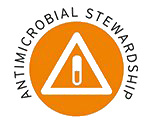January 27, 2020 -Clinical Synopsis
Patient Condition: 74 year old female with a venous leg ulcer for longer than 5 months and confirmed hemangioma. Prior to her referral to the wound specialty team at Lions Gate Hospital, Vancouver Coastal Health for stalled wound healing, the patient had received multiple courses of oral antibiotics,
… Read More
January 27, 2020 -ABSTRACT Aim:
To assess the effectiveness of the MolecuLight i:X Imaging Device in the management of bacterial load in burns patients.
Method: 30 burns patients were imaged at various points during their treatment (during dressing changes) using the MolecuLight camera.
Results/Discussion: 30 patients were photographed. 12 did not
… Read More
January 27, 2020 -ABSTRACT Aim:
Real-time, point-of-care detection of critical bacterial colonization relies primarily on visual inspection and clinical signs and symptoms. Fluorescence imaging has recently been used to detect bacterial fluorescence in wounds at the bedside.1 This pilot study aimed to assess its effects on clinician decisions and patient care.
… Read More
August 7, 2018 -ABSTRACT
The urgent need to eliminate unnecessary use of antibiotics in wound patients has been hampered by diagnostic uncertainty and the time required to obtain culture results. The authors evaluated bedside use of a handheld bacterial fluorescence imaging device for real-time visualization of bacteria within and around wounds, used in
… Read More
January 23, 2017 -ABSTRACT
Diabetes-related foot disease remains a common problem. For wounds, classic teaching recommends the treatment of any infection, offloading the wound and ensuring a good blood supply, as well as ensuring that the other modifiable risk factors are addressed and optimized. There remain, however, several questions about these and other
… Read More 









